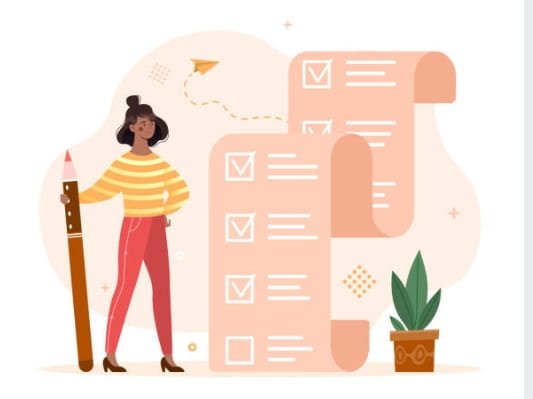
by admin | Jun 10, 2022 | General, Mind
Unexpected Ways To Be Creative
How To Keep Your Creative Juices Flowing While Having Novice Experiences Creativity can be very elusive sometimes. Many people have experienced what is called an “artist block” and know how frustrating it can be, especially if you have to meet specific deadlines. Feeling inspired and in your element is crucial when writing, making music, painting and the likes.
Creativity, however, is not useful only to artists. On the contrary, it has its applications regardless of your working environment. By finding inspiration in the surrounding world and utilizing it to make something yourself, you leave your own unique imprint and induce a massive mindset change.
Not only that, but you are also connecting to the tools you’ve used and giving an outlet to your thoughts and ideas. The sense of fulfillment when you see something you’ve made yourself is like nothing else. Creativity applied does indeed shift your mindset towards growth, and this is why we have made a list of activities that boost your creativity.
We hope you find them interesting and maybe try some yourself!
Cook Something

Food is one of the few necessities which can double as a hobby or creative outlet. We all need to eat; however, not all of us have tried cooking something difficult or arranging a dish to look a certain way. It’s a good idea to cook something when you feel stuck not only because food is necessary, but because we often want to eat something delicious and beautiful when we feel down.
Comfort food is a thing for a reason, after all. And what better way to make yourself feel better than by making something tasty that also looks great. It can be as simple as your favorite three-ingredient meal, just with some added twists or decorations. Or it can be some intricate dish you haven’t tried yet but are definitely dying to.
Whichever one you choose, you will likely feel a bit better after spending some time in the kitchen and enjoying the outcome.
Make Something Ugly

This may sound counterintuitive at first. A lot of us are used to only focusing on the end result. If something isn’t perfect at the end, there is no use in making it. That’s really not true. The process itself is just as important because that’s when we learn new things.
So instead of fixating on what the end product will look like, try making something just for the sake of it. Not everything we do has to be store-bought quality, and by having fun while making something that looks funny, you will remind yourself of that. Many people are so pressured to have their end result exactly the same as it is in their heads that they often don’t even try to make the thing in the first place.
By detaching yourself from that fear, you can start creating what you want to just because you find it fun. And that’s a pretty freeing way to look at things.
Go To The Garden

Nature is the best source of inspiration, and you can see its influence in almost every artist’s work throughout the centuries. Not all of us are painters or sculptors, however, so how can we use this wonderful source? The answer is actually surprisingly simple – try making your own garden. Whether you have your own backyard or live in an apartment on the 14th floor, taking care of a few plants is always possible.
The nurturing feeling this activity provides is synonymous with a good time. Once you get started, you can even use what you grow in different things. If you’re growing fruits and vegetables, or even spices, you can use them to later cook something yourself (a complete circle, huh). And if you’re more into flowers and other kinds of plants you can always decorate your house with them or herborize some. You can even use some fruits as decorations (dried lemon slices look great on a Christmas tree).
Talk To Different Artists
These are some of the most interesting people to have a conversation with. Their worldviews, past adventures, plans for the future – everything can be a source of inspiration. And the best part is most of the time they inspire you for your own ideas. Just by listening to their ideas, you often start thinking of your versions of them which is creativity already at work.
If you’re an artist yourself, you can start collaborating with artists in different mediums to yours and do some outstanding projects. However, if you aren’t, you can still be motivated by their creations and maybe even dare to make something yourself. And even if none of this works, you are definitely having some fascinating conversations and making some friends along the way.
Build Something

This can mean pretty much anything, which is the best part. You can start small and make a vase out of a wine bottle, for example. Or, if you’re feeling very creative, try making your very own coffee table or even a cupboard.
You can choose the materials or just reuse some already made items. Building and crafting bigger, more complicated objects gives you a spatial way of thinking which is sadly not commonly used. You may also encounter some difficulties requiring a more innovative approach during the process, which boosts your creative decision-making skills.
If you feel this is a bit too much for you, a fun way to still try this idea is to make miniature prototypes out of simple materials. Ice cream sticks or the cork used to close wine bottles are excellent materials to craft a mini version of some of the bigger items you like.
Planes, cars, or entire houses can be built with them, some glue and some wire, making great home decorations. Using different materials and tools to those you are used to in your everyday life breaks you out of your comfort zone and puts you in an entirely new environment. And that’s exactly where the magic of creativity can be found.
Final Thoughts
Allowing yourself to try things for the first time and not worry about the end product makes you look at the world through a different lens, which is often a more positive one.
Unleashing your creativity will also be useful in your daily life. Yes, it broadens your horizons, and yes, that’s a wonderful thing, but it does something else too. It reshapes your view and mindset towards your normal schedule and activities. Most people who are creative in this way say their routine has benefitted too because they appreciate different aspects of it.
So why not choose one of our ideas and start your adventure? Let’s get to it!

by admin | Jun 10, 2022 | General, Health, Mind
Unlearn These Habits for a Better You
Unlearning is the new learning in the journey of having a blissful quality of life. People say, learning a new good habit can be cumbersome but have you ever tried to unlearn a bad habit? It is much harder to unlearn a bad habit. We, as humans, catch up on bad habits very quickly and let them settle just as our second nature.
There are some habits that one should totally unlearn to grow and stimulate better life decisions.
Fear Of Change

You don’t have to be happy about everything that happens in your life. However, you should not let your fear stop you either. We are all aware that things could be much worse at any time in our lives. Also the fact that you are reading this article right now proves that you are some of the world’s wealthier and more privileged individuals.
Life is changing way quicker than ever before, and we may be confronted with new problems every day. As a result, the most capable of adapting individuals will always win in the long run. It’s much harder than it sounds, but it’s probably one of the most underappreciated words of advice. Even if changes are uncertain, they almost always have a positive aspect. Be brave, focus on the positive aspects, and try new things.
Procrastination

No matter what your age is, you will always end up procrastinating! We procrastinate because we subconsciously believe that the task ahead of us is too difficult. So, next time you’re in this scenario, make a habit of breaking down your activity into smaller, more manageable chunks.
Delaying something inevitable in your schedule is never beneficial, it only ends up making the timetable more congested and leaves you with greater stress than what you already had. Therefore, always aim to complete your tasks on time and stop procrastinating to let go of the habit of procrastination.
Comparison

Comparing yourself to others is not only disrespectful of your own capabilities but also a total disregard of others’ status. Being jealous of others’ achievements without knowing what they have been through in their actual life is never justified nor advised. Never compare yourself with others. Always compete with yourself and beat YOUR previous best.
Being Afraid to Make Mistakes

Isn’t making mistakes just an aspect of our human nature? Everyone makes mistakes but there are very few people who accept them and rectify them. Following the notion of hard work will always lead to success is one of the biggest mistakes that people make. Try to embrace your mistakes and it’s okay to make them. Never go too hard on yourself for making mistakes and instead, try to learn from them.
Obsessions with Other Peoples’ Opinions
How often do you feel discouraged because of the opinions of others? The chances are that your answer is too often. The scary part is that you will never be able to appease everyone. The good news is that it makes no difference. You only have one life, so don’t bother wasting it by trying to live up to the expectations of others.
You can’t be everyone’s favorite, but you can be your own hero and save yourself. Stop suppressing your inner voice to please others and start shining your light on the world. Start unlearning bad habits and learning the ways to improve the quality of life. No matter what your definition of quality of life is, just make sure to enjoy every moment and reap the utmost benefits from every day that you are living.

by admin | Jun 10, 2022 | Fitness, Diet
Veggies = Weight Loss?
There’s a commonly known idea that during a period of weight loss, you should eat more veggies and fruits, as that somehow, can supposedly help weight loss. But is there anything more specific to fruits in the context of making fat loss sustainable?
In this article, we’re going to give you some clues on the do’s and don’ts of weight loss nutrition, to help you create a more clear plan of action.
What Actually Causes Weight Loss?

It is a fact that the total amount of food, relative to your levels of activity (calories in vs calories out) is the most important principle of weight loss. In order to shed off those excess couple of pounds, you MUST consume less calories than you burn throughout the day. That is also referred to as “eating in a caloric deficit” and is, again, the fundamental principle of weight loss.
What About Caloric Content?
Being in a caloric deficit is something you simply cannot skip, but that does not really exclude the choice of food in your diet. No food can cause weight loss/weight gain in and of itself, but we can choose foods that can:
- Increase satiety
- Improve recovery
- Fill up energy stores
- Replenish micronutrients
HINT: Veggies are just a part of your diet
The goal of fat loss is to not just decrease the number on the scale, but to also be able to adhere to the nutrition plan and to be in peak physical shape. Therefore, it is essential to provide the body with the highest possible quality of foods.
Choose These
In general, you should focus on whole foods that were grown in a good environment and if that’s animal foods, you should make sure that they were fed well. As a matter of fact, most animals grown for their meat do not get sunlight, live in tight spaces with many other animals and are fed with processed fodders.
All of these factors affect the meat quality and thus, it is optimal to look into alternatives.
Here are the best foods you can add to your nutrition plan:

- Grass-fed beef
- Free range chicken
- Pork
- Free range chicken eggs
- Broccoli
- Avocado
- Carrots
- Beetroot
- Sweet potatoes
- Normal potatoes
- Brown rice
- White rice
- Dairy products
All 13 of these foods are likely to help keep you full and satiated, thus making it highly unlikely for you to overeat and exceed your caloric needs.
This technically patches the problem of cravings and furthermore, if you combine whole foods with resistance training, you are setting yourself on a path to aesthetics.
So Veggies Don’t Really Mean Much? 🙁

As we mentioned, no food, even veggies, can cause weight loss just by being in the diet.
The perks of veggies however are the following:
- Plenty of micronutrients (vitamins/minerals)
- Plenty of fiber (Keeps you full)
- Big volume of food for little calories
- They feel fresh!
Do include veggies in your weight loss plan, as they will help keep you fuller for longer, on top of the other nutrients you get from whole foods, that regulate satiety. The same thing goes for fruits and even more so, one of their main perks is that they are sweet and can replace processed desserts.
Take This Home
If you are trying to lose weight, focus on eating whole foods with plenty of quality protein and fats, as those are the nutrients that will keep you full and satiated.
Once you have secured your macronutrients, you can add a couple of high volume, low-calorie salads here and there to totally kill the feeling of hunger!
This is where veggies truly shine.

by admin | Jun 10, 2022 | Workouts
Volume Cycling In Training
Training volume appears to be one of the factors that play a primary role in inducing muscle development stimulus. And though it is an important one, it needs to be properly combined with intensity and rest times. When you combine both, to create an effective working volume, you can start playing around with the numbers of sets and reps, to emphasize the development of certain body parts.
In this article, we’ll take you through the basics of volume cycling to give you insight on how you can improve your lacking areas.
What Are Volume & Intensity
Training intensity & training volume are two separate training variables, which have to be very well combined, as we already mentioned.
Intensity increases the closer you get to your maximum strength capabilities on a given exercise. For instance, if you can bench press 100 kg for 1 rep and fail to do a second rep unassisted, 100 kg represents 100% intensity for you, for that exercise.
Volume on the other hand, represents the total amount of weight lifted on a given set, exercise or a workout. For example, if we take that same 1 rep set with 100 kg, that would be a volume of 100 kg. Oppositely, if you do 10 repetitions with 100 kg, that would be a volume of 1000 kg (Volume = Weight * Sets * Reps)
What Is The Optimal Training Volume?

When you combine intensity and volume, you get a workload that is challenging and each set takes you within 2-4 reps shy of failure. This is effective volume and should be at the core of your workouts, whether you are training for strength or for bulk muscle growth. The optimal training volume forms at 10-20 challenging working sets, per muscle group, per week, depending on your level of training.
Beginners for example can reap benefits with just 5-6 sets per week, but as you progress and reach 15-20 sets, plateaus in development may be reached.
What is Volume Cycling?

Trying to build up all muscle groups all at once may be a challenging and unsustainable task, because all compound exercises engage multiple muscle groups. For this reason, it often happens that you may not be able to get to peak recovery, especially on your weaker muscle groups.
This is when you can implement the concept of volume cycling, which implies a slight decrease in the volume for already well-developed muscle groups, and an increase for the weaker muscle groups.
Technically, this concept works for bringing up weak body parts, because the minimum volume you can MAINTAIN the well-developed muscle groups at, is about 30% of your minimum effective volume (i.e you can do ~5 sets per muscle group per week and maintain it).
Example Of Training Adjustments
Now, though you will be putting priority on your weaker muscle groups, you should still consider choosing exercises that work WITH your stronger body parts. Those are compound movements that allow you to lift heavy weights, but on top of that, you can also include a good amount of volume with isolated movements.
For instance, if your chest is well developed, but your triceps are lacking, focus more on close grip bench press & triceps dips – This primarily engages the triceps, but also the chest and shoulders.
This is mostly applicable for the upper body, where certain exercises for the bigger muscle groups, may leave the smaller muscle groups exhausted and unable to complete quality volume.
Tips For Bringing Up Lacking Muscle Groups
Manipulating your training variables is one of the most important things about bringing up weaker muscle groups. Besides that, you can view your training split and week as a cycle, where you usually have the most energy and focus at the beginning.
For this reason, you can structure your training around the weaker muscle groups by:
- Placing them first in the training split
- Placing them first in the workout
Furthermore, you can apply volume cycling, place a cooldown on dominant muscle groups and focus on the lacking ones by increasing the weight, sets and repetitions.
To Wrap It Up
Training volume is an essential part of your workout and when combined with intensity, it can create a powerful stimulus for overall muscular development. Nevertheless, sometimes it happens that some muscle groups develop faster than others, leaving lacking muscle groups behind. This is exactly when you can reload on the well-developed groups and pump up the quality volume in favor of your weaker ones.
Ready to achieve aesthetics? Go for it!

by admin | Jun 10, 2022 | Fitness
What Actually Works For Fat Loss
If you’re like most people, you’ve probably tried a bunch of different diets and exercise programs in your quest to lose weight. But have any of them actually worked? Well, in many cases the answer is “no” and even more so, if a diet is successful and leads to weight loss, it often leads to the so-called “yo-yo effect”.
This implies that the individuals who lose weight, often gain it all back, and then some more. The low rate of success among dieters is perhaps a product of the mass misinformation we get exposed to, daily. Supplement companies marketing fat-loss products, coaches marketing one-size-fits-all weight loss programs – We all know the drill.
But what if you had to lose weight on your own, without any external help? What would you ACTUALLY need to do, in order to lose weight and keep it off? Keep reading to find out!
The Fundamental Principle

Now, the first thing to remember is that fitness isn’t about following trends, but rather, understanding the underlying principles, and applying them. In the context of weight loss, the fundamental principle you can’t get around, is the principle of calories in vs calories out. To put it simply – Your body needs a certain amount of energy (calories), every day, to maintain its weight and sustain healthy functioning.
If you consume more energy than the body needs, you will gain weight. And vice versa – If you consume less than the body needs, you will lose weight. If you really want to lose weight, doing the latter is MANDATORY because, again, there is NO way around it. You lost weight following the keto diet? Cool, that means you were in a deficit.
You lost weight with intermittent fasting? … You were in a deficit. You get the point – Creating a caloric deficit is essential in a diet, because this is how you let the body burn more fat than it stores and thus, reduce the total amount of fat mass.
What Else Matters, Really?
To many people, the term “deficit” may sound borderline scary, and while it is the primary and most essential principle for weight loss, there are other important considerations. Because frankly, there are many ways you can go wrong with a diet and feel flat-out burnt-out So let’s have a look at the 3 most important factors when following a diet.
#1 Sustainability

The only good diet, is the one you can stick to in the long term, meaning that your diet must NOT feel tortuous. Sustainability & adherence to a diet is two of the primary components that make up for a successful weight loss journey. To do this, you have to create a moderate caloric deficit of about 400-500 calories per day. But you don’t have to weigh every single bite that goes into your mouth. Simply, aim for a weight loss rate of about 1-2 lbs per week.
#2 Satiation
Number two and three on this list are tightly connected to the first point we just mentioned above, which is sustainability. One of the things that lead people to ditch their diets quickly, is that they are simply NOT satiated. It’s that constant feeling of being able to eat the world. But frankly, that’s because most people think that a diet is about eating fruits, salads, drinking coffee, and water.
And to be very honest with you, these are all foods that are not satiating at all. Even more so, they can make you hungry! The foods that are highly satiating are usually the foods that would make your diet sustainable and very bearable. Think of it this way – Any food that is abundant in protein, fats or both, will be satiating. Think meat, eggs, organs, nuts, and avocados. Put these foods at the core of your diet plan!
#3 Crave Management

More often than not, seemingly ‘small’ snacks and cravings can ruin your diet completely. It is normal, though – Being in a caloric deficit will inevitably make you crave certain foods. To battle this, there are a couple of things you can do:
- Establish a moderate deficit (#1 of this list)
- Eat satiating foods (#2 of this list)
- Eat your favorite ‘dirty’ foods more frequently
“Wait, what? Eat my favorite dirty foods MORE frequently?” Well, yeah, that’s right! As we mentioned, a caloric deficit is the only mandatory thing about weight loss. You can eat ice cream, be in a caloric deficit and still lose weight, because it is not about the TYPE of food you eat, but the AMOUNT.
And so, if you eat your favorite dirty foods more frequently, they become less special, and thus, cravings subside! If that’s not the case though, you have to practice conscious constraint, where you take conscious decisions NOT to follow a craving.
Final Thoughts
So there you have it, the low down on what works when it comes to shedding fat. Of course, everyone is different and some things may work better for you than they do for someone else, but if you want to see results then these are the principles you need to follow. And remember, always consult with a doctor before starting any weight loss program. Now go forth and crush your routine!



























